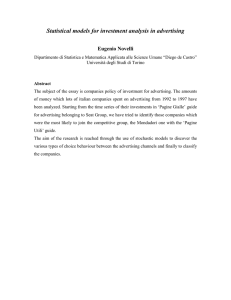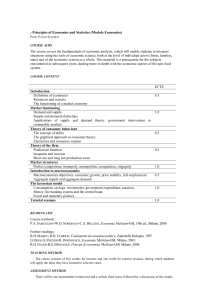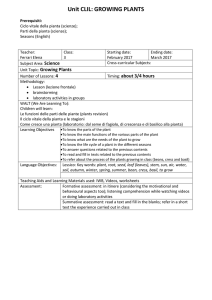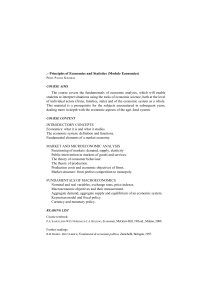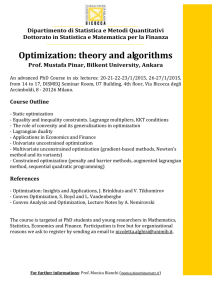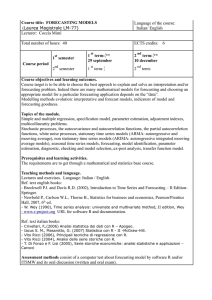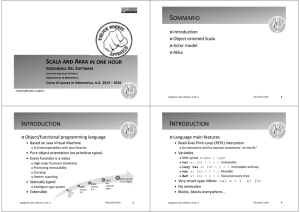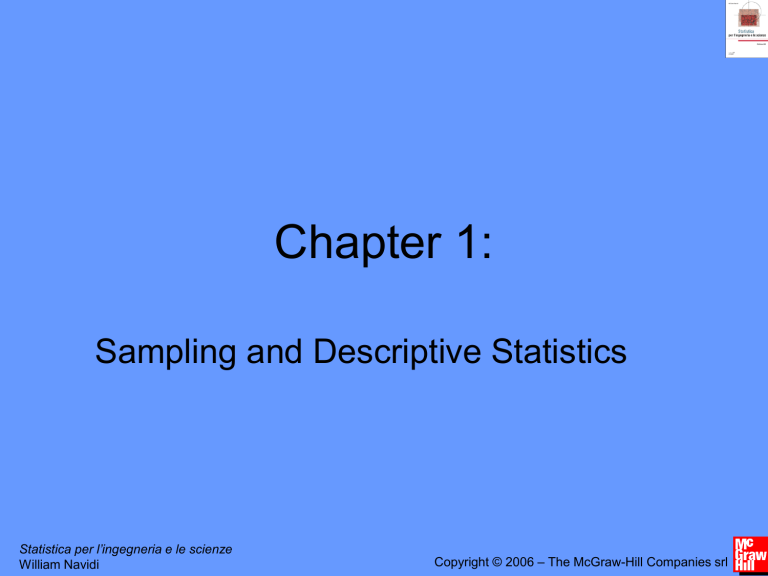
Chapter 1:
Sampling and Descriptive Statistics
Statistica per l’ingegneria e le scienze
William Navidi
Copyright © 2006 – The McGraw-Hill Companies srl
Why Statistics?
• Uncertainty in repeated scientific
measurements
• Drawing conclusions from data
• Designing valid experiments and draw
reliable conclusions
Statistica per l’ingegneria e le scienze
William Navidi
Copyright © 2006 – The McGraw-Hill Companies srl
Section 1.1: Sampling
Definitions:
A population is the entire collection of objects or
outcomes about which information is sought.
A sample is a subset of a population, containing
the objects or outcomes that are actually
observed.
A simple random sample (SRS) of size n is a
sample chosen by a method in which each
collection of n population items is equally likely
to comprise the sample, just as in the lottery.
Statistica per l’ingegneria e le scienze
William Navidi
Copyright © 2006 – The McGraw-Hill Companies srl
Simple Random Sampling
• A SRS is not guaranteed to reflect the population
perfectly.
• SRS’s always differ in some ways from each
other, occasionally a sample is substantially
different from the population.
• Two different samples from the same population
will vary from each other as well.
This phenomenon is known as sampling
variation.
Statistica per l’ingegneria e le scienze
William Navidi
Copyright © 2006 – The McGraw-Hill Companies srl
More on SRS
Definition: A conceptual population consists of all
the values that might possibly have been
observed.
• For example, a geologist weighs a rock several
times on a sensitive scale. Each time, the scale
gives a slightly different reading.
• Here the population is conceptual. It consists of
all the readings that the scale could in principle
produce.
Statistica per l’ingegneria e le scienze
William Navidi
Copyright © 2006 – The McGraw-Hill Companies srl
SRS (cont.)
• The items in a sample are independent if
knowing the values of some of the items
does not help to predict the values of the
others.
• Items in a simple random sample may be
treated as independent in most cases
encountered in practice. The exception
occurs when the population is finite and
the sample comprises a substantial
fraction (more than 5%) of the population.
Statistica per l’ingegneria e le scienze
William Navidi
Copyright © 2006 – The McGraw-Hill Companies srl
Types of Data
• Numerical or quantitative if a numerical
quantity is assigned to each item in the sample.
• Height
• Weight
• Age
• Categorical or qualitative if the sample items
are placed into categories.
• Gender
• Hair color
• Zip code
Statistica per l’ingegneria e le scienze
William Navidi
Copyright © 2006 – The McGraw-Hill Companies srl
Section 1.2: Summary Statistics
• Sample Mean:
1 n
X Xi
n i 1
• Sample Variance:
2
1 n
1 n 2
2
s
X
X
X
nX
i n 1
i
n 1 i 1
i 1
2
• Sample standard deviation is the square root of the
sample variance.
• If X1, …, Xn is a sample, and Yi = a + b Xi ,where a and
b are constants, then Y a bX .
•
If X1, …, Xn is a sample, and Yi = a + b Xi ,where a and
b are constants, then sy2 b2 sx2 , and sy b sx .
Segue…
Statistica per l’ingegneria e le scienze
William Navidi
Copyright © 2006 – The McGraw-Hill Companies srl



